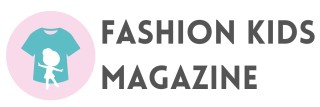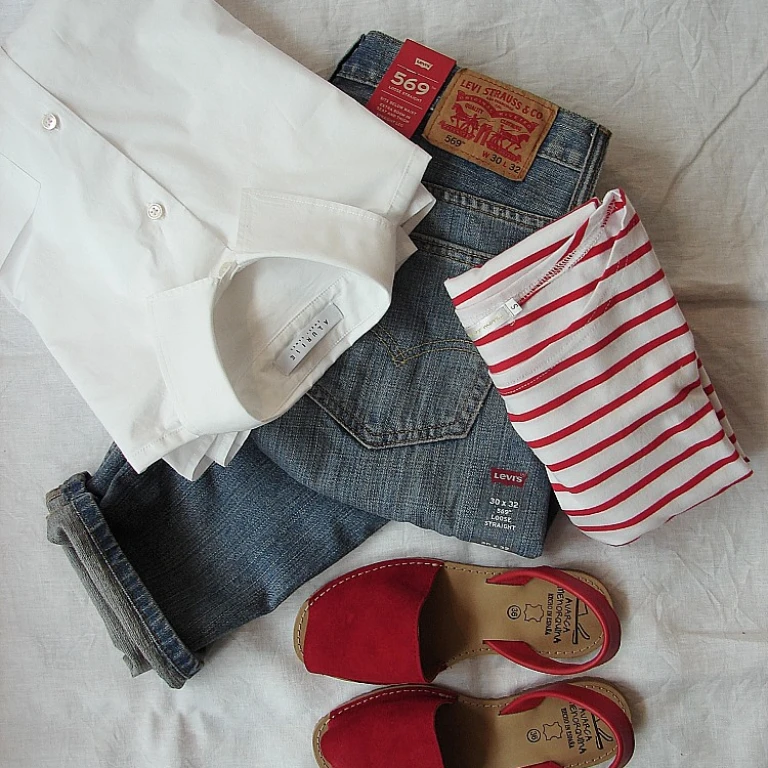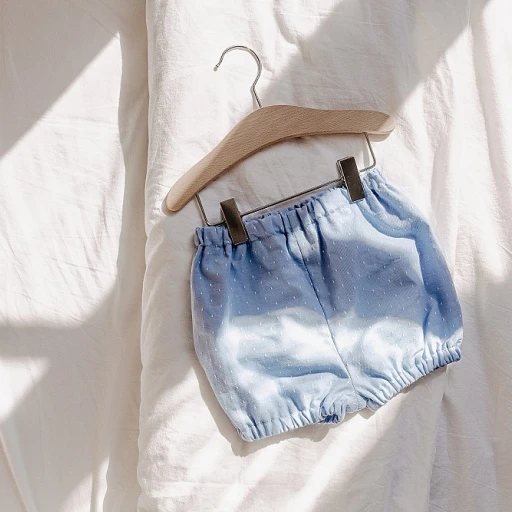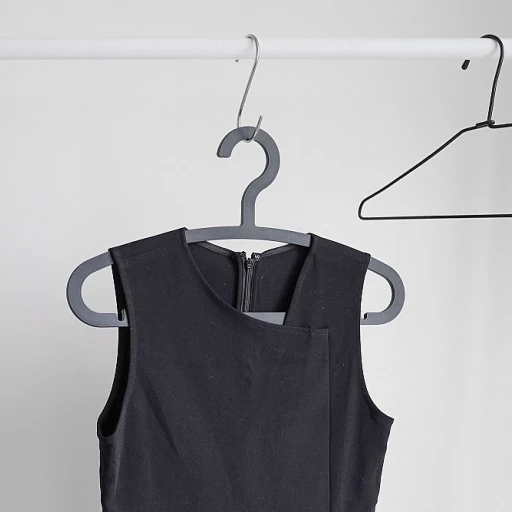Understanding the market for kids clothes
The Demand Dynamics in the World of Tiny Togs
When stepping into the bustling market of pint-sized fashion, understanding the demands and trends is crucial for anyone wondering how to sell kids clothes. It's a sector where traditional brick-and-mortar approaches and the digital storefronts coexist, though increasingly tilting towards online platforms. Research indicates that the global market for kids clothing has been growing steadily, with parents wordwide seeking both practicality and style for their offspring. Analysts from leading market research firms have recognized that while the need for baby clothes remains constant, it is the children clothing sector that's expected to burgeon, riding on the wave of kids becoming fashion-conscious at a younger age.
Expert Perspectives on Market Growth
Experts like Juliette Thomas of 'Youthful Trends Today' state that "parents are looking for durable, adaptable pieces that offer value for money while reflecting their child's developing personality." This quest for diversity is reflected in the offerings by big names like Mini Boden and Gymboree, who continually adapt their collections to meet these evolving needs. Studies from market analyzers continue to accentuate the resilient sales in both the USA and Canada, with a notable uptick in China's market owing to the second-child policy reforms.
Reimagining Resale
The resale market is clearly outpacing traditional retail when it comes to kids' fashion. Platforms like Poshmark, Swap.com, and the largest online consignment shops are now go-to places for parents seeking to buy and sell kid clothes. The nature of children outgrowing clothes within months underpins the appeal of the resale market, emphasizing value for money and sustainability. This surge in acceptance for pre-loved items is well-documented in studies highlighting that nearly 40% of parents consider second-hand clothing a viable option. For those with items to donate instead of sell, communities provide ample opportunity. To understand where you could contribute, you could explore options on how to donate kids clothes to make a significant impact.
Seasonal and Geographic Nuances
Seasonal shifts and regional trends also play pivotal roles in the sales of children's clothes. For instance, coats and jackets see a sales boost in cities like Philadelphia and San Francisco as winter approaches, while swimwear and shorts spike in Charlotte and Austin come summer. Regardless of these fluctuations, certain items such as Adidas tracksuits and Hanna Andersson pajamas maintain year-round popularity, indicative of brand loyalty and the importance of stocking evergreen items.
Understanding the market is just the beginning. To capture buyers’ attention and outshine the competition, sellers must not only stock the right items but also present them appealingly and market them effectively. Therefore, once the market dynamics are comprehended, the next step is all about visual merchandising and creating a virtual storefront that resonates with your target audience.
Setting up your shop: online store vs consignment
Choosing Your Selling Platform
When considering how to sell kids clothes, one of the first decisions you'll need to make is whether to set up an online store or opt for a consignment approach. A personal online store can grant you full control over branding and customer interactions, but it requires time to build. For those looking to get started quickly, consignment could be a more appealing choice, as it taps into established platforms with built-in audiences.
With free tools like PayPal and easy-to-use website builders, setting up an online store is now more accessible than ever. In fact, platforms like Shopify and Etsy have empowered many parents to transform the occasional yard sale into a profitable venture. Data shows that online boutique children's clothing stores have seen a rise in sales, year on year, with a particular boom in ethically made kids' clothing.
Alternatively, selling on consignment allows you to place items in an existing store or on online consignment shops like Poshmark, Mercari, or Swap.com. This route can save considerable time and effort in exchange for a portion of the sales price. Consignment has gained traction for its sustainability angle, offering a platform for pre-loved kids apparel and thus aligning with eco-conscious consumer trends.
For more information on how to donate items you can't sell, you can check this guide on where to donate kids clothes.
Maximizing Visibility and Reach
Once you've committed to an online store or consignment, the next step is maximizing the visibility of your clothes. Dabbling in a mix of social media platforms can be a game-changer. Platforms like Instagram and Facebook allow you to create a community around your brand and utilize social media marketing techniques to engage potential buyers. Curated photos of your kids wearing the outfits can generate more interest compared to standard product images.
Even for those who choose the consignment route, maintaining a presence on social media can help drive traffic to your items. Joining parenting groups or local swap communities on Facebook can also be an effective strategy to sell kid clothes. As you engage with these online communities, remember to share not just listings but also stories and advice, which further cements your reputation as a trusted seller.
Photography tips for showcasing your kids clothes
Mastering the Art of Kidswear Photography
When you're looking to sell kids clothes, a picture is worth a thousand words, and a few great snaps could be worth a thousand dollars! Captivating images can grab a buyer's attention and provide a detailed preview of your items, increasing the likelihood of a sale. Choosing the right background, lighting, and equipment are all key factors in making your kidswear stand out.
Choosing the Perfect Backdrop
The backdrop for your clothing should be neutral to let the items speak for themselves. Whether you opt for a solid-colored fabric or a professional photography backdrop, make sure it’s wrinkle-free and complements the clothing. This ensures the focus stays on the garments, highlighting their colors and details.
Lighting Matters
Natural daylight is your ally, casting soft, flattering light on delicate fabrics and vibrant prints. Strategically schedule your photo shoots during the daytime, using the soft light of morning or late afternoon to avoid harsh shadows. If natural light isn’t feasible, invest in some softbox lights for evenly distributed, studio-quality illumination.
Quality Camera for Quality Photos
While smartphone cameras have come a long way, a DSLR camera provides control over focus and depth of field, allowing for more professional results. Make sure you're familiar with its settings and capabilities to best showcase the textures and details of the garments.
Styling and Accessories
Add life to your kids' clothes by accessorizing. Pair outfits with complementary shoes or include fun props. A well-styled look paints a picture of how the items can be worn, giving potential buyers style ideas and pushing them closer to a purchase. Just remember, the accessories shouldn't overshadow the clothing—it's all about balance.
Editing for the Finest Finish
Finally, post-process your photos to correct any lighting or color issues. Software tools like Adobe Photoshop or Lightroom can work wonders here, but remember to keep alterations minimal; the aim is to enhance, not deceive. Potential buyers trust accurate representations of the clothing, and misleading pictures can damage credibility and result in returns.
Incorporating these photography tips can make all the difference in how quickly and effectively you sell kids clothes online. With a little effort and creativity, your shop's appearance can rival the pros, setting you up for kids' fashion success.
Leveraging social media to sell kids clothes
Expand Your Reach Using Social Platforms
Nowadays, a smart social media strategy could mean the difference between an item gathering dust or flying off the virtual shelf. In fact, experts note that social media influences an estimated 74% of shoppers in their buying decisions. This is especially true for categories like kids clothes where visual appeal is paramount. Kids clothing brands have discovered that platforms such as Instagram and Facebook are particularly effective for reaching parents who are looking for that perfect outfit for their child.
But it's not enough just to be present on these platforms. The key is engagement. When you share photos and stories about your items—maybe even sprinkling in some behind-the-scenes content—you give each piece a narrative. And according to Samantha Miller, author of 'Marketing Threads,' this approach can lead to a 40% uplift in sales.
An example worth mentioning is how a small online store, which began by selling baby clothes, saw a significant increase in their business after they started showcasing customer testimonials. Sales data indicated a 25% rise in repeat business, largely attributed to the authenticity they displayed online. This kind of trust is gold when you're wanting to sell kids clothes.
Studies by the Children's Wear Retail Report also show that kids fashion trends evolve rapidly, and staying atop these trends—and sharing relevant content—can attract a substantial audience keen on keeping their little ones stylish. Not to mention, if you incorporate user-generated content, like photos of kids wearing your items, you normalize second-hand clothing while boosting the item's desirability.
However, there's a fine line to walk with social media marketing. Push too hard, and you risk annoying potential customers; too subtle, and your message may get lost in the noise. One case study provided by the Kidswear Collective underlined the efficacy of ‘lifestyle’ posts over direct sales pitches. They reported better engagement—measured in likes, comments, and shares—which often translates to better sales performance.
In terms of controversies, it’s worth noting the ethical concerns around child privacy and the use of their images on social media. As a seller, always ensure you have the right permissions and are sensitive to how children are portrayed. It’s a slippery slope, and maintaining the balance between effective marketing and respect for privacy is crucial.
To sum up, with clear, vibrant images and interactive posts, your social media pages can serve as dynamic catalogues that entice and retain customers. Remember, it's not just about pushing products, but creating a community around your brand where each post is a conversation starter. With the right strategy, your kids clothes online can be the next go-to for trendy, eco-conscious parents looking to deck out their children in the cutest outfits.
Pricing strategies for pre-loved kids clothing
Getting Your Price Right
When selling kids clothes, especially those pre-loved gems your young ones have outgrown, crafting a solid pricing strategy is vital. It's a balancing act between ensuring you're competitive and getting fair value for the items. Remember, parents are looking for deals, but undervaluing your clothes might leave money on the table.
Research Before You Price
Before assigning prices, do your homework. Check out what similar items are selling for on various platforms. Sites like Poshmark and Swap.com can offer great benchmarks. Also, consider the brand, condition, and seasonality of the clothing. Hot brands like Mini Boden or Hanna Andersson might fetch a higher price, even second-hand.
Consider Bundle Deals
Bundling similar items or 'outfits' can be an effective strategy. It makes the deal seem more valuable and reduces the per-item selling costs. Pricing a bundle is typically lower than the sum of individual pieces, but more attractive to buyers. So, you move more items and buyers feel they're getting a steal.
Adjust Prices Over Time
Don't just set it and forget it. Monitor how your items are performing. If clothes aren't selling, consider lowering the price incrementally. Conversely, if things fly off the virtual shelves, you might be pricing too low. Find that sweet spot and adjust as needed.
Transparency with Pricing
Be upfront about costs. No surprises means no disgruntled buyers. If you're selling online, factor in fees from platforms like eBay or Mercari, and clarify if shipping costs are included or separate. Transparency builds trust, and trust builds repeat business.
Discounts and Promotions
Promotions or discounts can also help shift those stubborn items. End-of-season sales, multi-buy discounts, or 'share on social media for a discount' can all incentivize buyers without significantly slashing your margins.
In the end, pricing your kids' clothing smartly is just one piece of the puzzle. It goes hand-in-hand with taking great photos, writing compelling product descriptions, and providing excellent service. All these contribute to a reputation for quality and reliability that will keep customers coming back for more.
Writing product descriptions that sell
Mastering the art of product descriptions
When parents decide to buy or sell kids clothes, they often weigh the pros and cons of each item, contemplating whether it's perfect for their little one. A well-crafted product description could sway their decision, potentially turning a browser into a buyer. Why? Because details matter immensely in the online children clothing market where touch and feel aren't possible. To sell kids clothes effectively, you need to paint a vivid picture and answer all the questions a customer might have.
Details that delight
Product descriptions should be as comprehensive as possible without becoming overwhelming. Include measurements, material content, care instructions, and any other relevant information. For example, noting that a pair of baby pants comes with an adjustable waistband gives a clear, practical benefit. Just think about the parent struggling to find clothes that fit their fast-growing toddler.
Storytelling that sells
It's also beneficial to weave a little story around the items you're selling. If you're dealing with baby clothes, for instance, talk about how the soft fabric will feel against the baby's skin or the ease with which parents can change diapers due to the thoughtful design. These small narratives connect emotionally with the buyer, often convincing them to click 'add to cart'.
SEO savvy
Besides being informative and engaging, remember to integrate key search terms like 'kids clothes online,' or 'sell baby clothes' to help your listings rank higher in search engines, which drives visibility and traffic.
Enticing visuals and words
As you might have picked up from our photography tips, the visual representation of the item should go hand in hand with your description. Use high-quality images to complement your words, creating a coherent and attractive package. This dual approach can significantly increase the likelihood of selling kids clothes.
Transparency is key
Always be honest about the condition of the clothing. If there's a small stain or a missing button, make sure to mention it. Customers appreciate authenticity and are more likely to trust sellers who are upfront about any imperfections. This transparency not only builds credibility but can also help in fostering a lasting relationship with your customer base.
A call to action that converts
Last but not least, end your description with a compelling call to action. Encourage potential buyers to make a purchase or to reach out with questions. Phrases like 'Don't miss out on this adorable outfit!' or 'Get it before it's gone!' can add a sense of urgency and persuade the customer to act.
With these insights into crafting compelling product descriptions, you'll have a strong tool to help increase sales and satisfaction. Remember, each piece of clothing has its own story and benefits that can appeal to the discerning eye of a parent looking for the best for their child.
Navigating postage and handling for online sales
Understanding the ins and outs of shipping
When you've got the perfect photo and your listing has attracted a buyer, the next hurdle is ensuring your kids' clothes reach their new home safely and affordably. Negotiating the world of postage and handling can be tricky, but with a few seasoned tips, you'll have this down to a fine art. A key factor to consider is that shipping costs can vary widely depending on the service provider you choose, with companies like USPS, UPS, and FedEx offering a range of prices and delivery times.
Choosing the right carrier
For most small businesses and individual sellers, USPS offers competitive rates, especially for light packages typical of baby and kids clothes. Investigating the flat-rate shipping options can also save you time and money, as they allow you to send packages up to a certain weight without worrying about additional costs. Keep in mind that regional carriers like Canada Post or Royal Mail might be better suited if you're shipping internationally from the USA to Canada or the UK, respectively.
Cost-effective packaging
Optimizing your packaging not only reduces costs but also ensures items arrive in great condition. Bubble mailers are a go-to for small, less fragile items, while boxes with proper padding might be best for bulkier orders or delicate pieces. Remember to keep the packaging light to minimize shipping fees, and consider eco-friendly packaging options to appeal to environmentally conscious customers.
Streamlining the process with online tools
Leveraging online platforms can simplify your shipping workflow. Many selling platforms integrate directly with postage services, offering discounted rates and printable shipping labels from the comfort of your home. PayPal, for instance, allows you to print discounted USPS and UPS labels even if the sale wasn't made through PayPal. Tools like these save you a trip to the post office and the hassle of long lines.
Tracking and insurance for peace of mind
Adding tracking to your packages is a must. It not only gives you peace of mind but is also a boon for customer service, as buyers can monitor their parcels' journey. In some cases, like with PayPal or major carriers, tracking is included automatically. Insurance might seem like an unnecessary expense, but for high-value items, it can be a wise choice to protect against loss or damage.
A tailored approach to international sales
Going global with your kids' clothing sales? Shipping internationally poses additional challenges, such as higher fees, customs forms, and longer delivery times. Look into online consignment shops that cater to international clientele or use eBay's Global Shipping Program to streamline the process. Always be transparent with your buyers about potential delays and duties that they might be responsible for upon arrival.
Final touch: the personal flair
A personal note or a small freebie included in the package can elevate the unboxing experience and encourage repeat business. This personal touch, coupled with reliable and efficient shipping, could make your store stand out in the competitive online consignment market. The extra effort in wrapping might just translate into positive reviews and customer loyalty.
By now, you've got a better idea of how to capture buyers with eye-catching photos and how social media can boost your sales. The right shipping strategy completes this trio, providing a seamless end-to-end shopping experience. With careful consideration and a bit of savvy planning, your online store will be not just about selling pre-loved pieces, but about delivering joy one carefully packed box at a time.
Building customer trust and repeat business
Tips for Cultivating Customer Loyalty
When it comes to selling kids clothes, one of the biggest game changers can be fostering a sense of trust with your buyers that encourages them to become repeat customers. Trust is the foundation of repeat business, and repeat business is what can sustain your venture over time. Start by always being transparent about the condition of the clothes you’re selling. Honesty not only establishes your reputation but also reduces the chance of returns and negative feedback.
Creating a Personalized Shopping Experience
Building a personal relationship with your customers can make a huge difference. Take the time to understand their needs, remember their preferences, and offer them deals that cater to what they value the most. This could involve creating a rewards program for returning customers or sending birthday discounts for their little ones. Such gestures can make your store stand out from the crowd and keep customers coming back.
Encouraging Feedback and Referrals
Maintain an open channel of communication with your buyers. Encourage them to provide feedback, and if it’s positive, ask them to refer their friends and family. Referrals are a powerful tool because people tend to trust personal recommendations. Make sure you thank each customer for their purchase and let them know they’re appreciated. These small steps can go a long way in developing a loyal customer base.
Fostering a Community Around Your Brand
You’ve already used social media to draw them in, so why stop there? Create a community around your brand by engaging with customers on these platforms. Share stories, participate in conversations, and perhaps even feature customer’s kids wearing your gear (with permission, of course). This shows you’re not just selling clothes, you’re celebrating the growth and milestones of their children alongside them.
Streamlining the After-Sale Process
After their purchase, make sure your customers have all the information they need concerning tracking, delivery times, and your return policy. A positive unboxing experience can also make a memorable impact. Think about sustainable, attractive packaging or a thank you note inside—the extra mile doesn’t go unnoticed. Should they need to return an item, ensure the process is hassle-free. This builds trust and the likelihood they will come back even if the original sale didn’t stick.
Remember, every interaction is an opportunity to reinforce your customer’s decision to shop with you. By focusing on these aspects, you extend a one-time sale into a lasting relationship, turning your clients into valued, repeating customers who are excited to buy and sell kids clothes with you time and again.


-large-teaser.webp)





